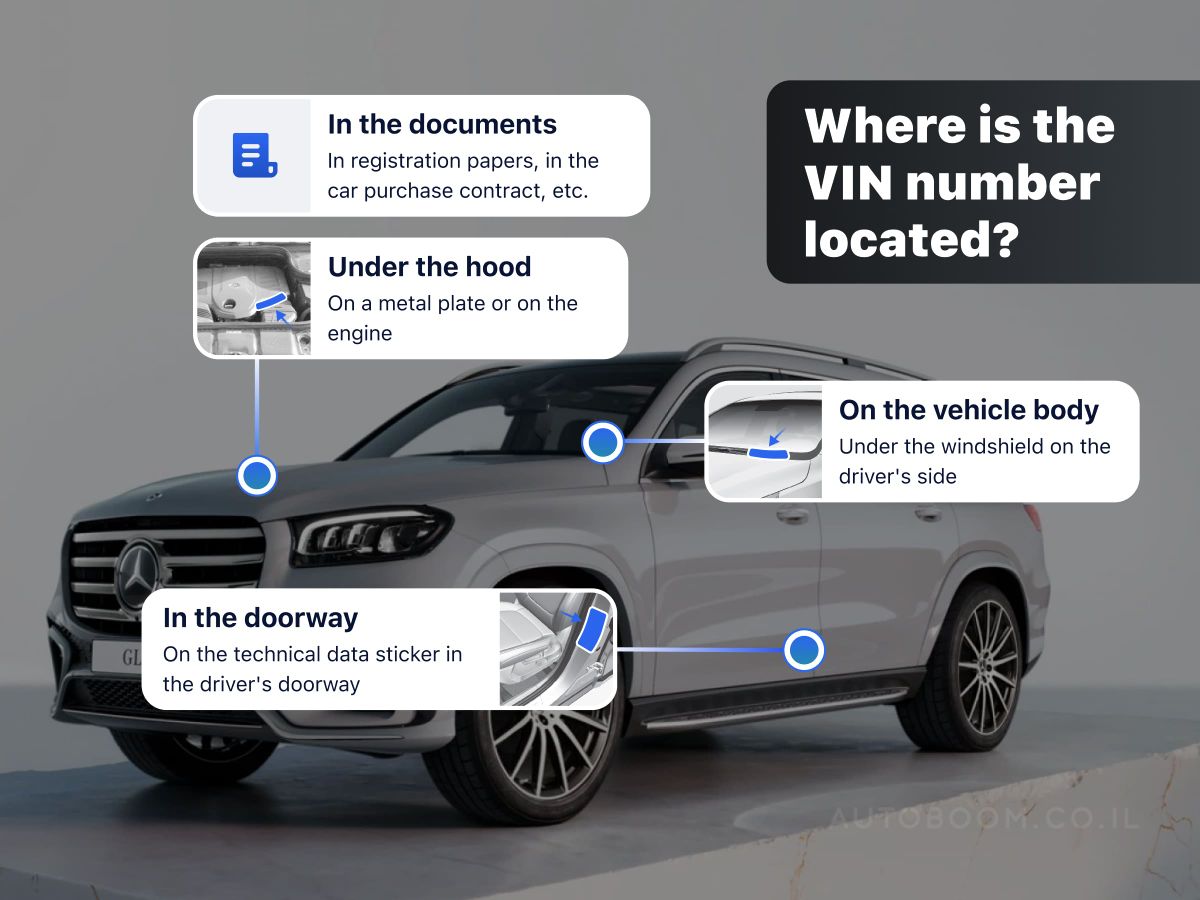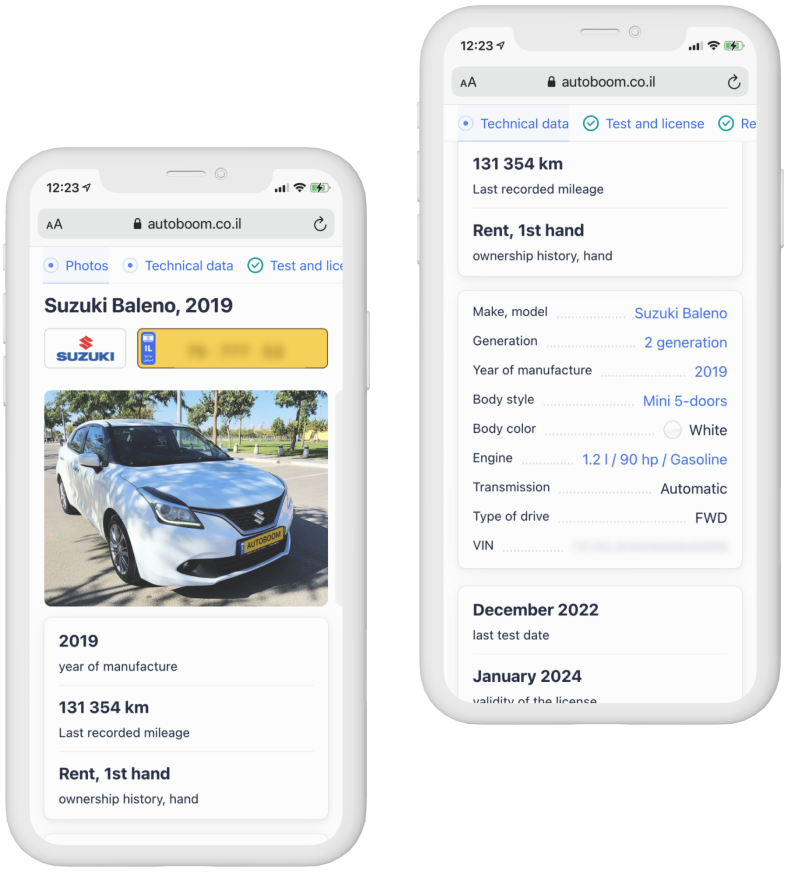What is a VIN number of a car
VIN (Vehicle Identification Number) is a unique 17-digit identification code assigned to each vehicle at the factory. It acts as a “passport” because it contains key data about the vehicle. The VIN number is used to track the history of the vehicle, check for theft or involvement in an accident, and also to determine the original characteristics of the car.
Structure and decoding of VIN-number
The VIN number consists of 17 characters (numbers and letters), each of which has its own meaning. Any VIN can be divided into three parts:
- WMI (World Manufacturer Identifier) — manufacturer identifier (1 to 3 characters)
- VDS (Vehicle Descriptor Section) — vehicle description (4th to 9th characters)
- VIS (Vehicle Identifier Section) — vehicle identification code (10-17 characters)

WMI (1-3 characters) - country and manufacturer
The first three characters of the VIN indicate the manufacturer and country of assembly of the vehicle. For example:
- 1, 4, 5 - cars made in the USA
- J — assembled in Japan
- W — Made in Germany
- Z — Made in Italy
VDS (4-9 characters) - vehicle specifications
The 4th to 9th digits of the VIN code contain information about the model, body, engine type, gearbox and other technical characteristics of the car. The data is usually standardized for each manufacturer, so each brand has its own set of designations.
VIS (10-17 characters) - unique identifier
The last eight characters of the VIN are unique to each vehicle. The number 10 is especially important, indicating the year the vehicle was manufactured, for example:
- A — 1980
- B — 1981
- Y — 2000
- 1 — 2001
- 2 — 2002
The last numbers from 11 to 17 usually contain the factory numbers and serial identifiers of a specific vehicle.
Where is the VIN number located?
The VIN number can be found in several places on the vehicle:
- On the body - under the windshield on the driver's side
- In the doorway - on the technical data sticker in the driver's doorway
- Under the hood - on a metal plate or on the engine
- In documents - in rishayon rechev, in the contract for the purchase of a car, etc.

Useful information and tips for using VIN
- Checking the history of a vehicle. Using the VIN number, you can check the history of a vehicle, find out whether the car was in an accident, was listed as stolen, or was pledged
- Checking the originality of the equipment. The VIN number will help you find out the “original” characteristics of the car when it was manufactured and determine whether key components such as the engine and gearbox have been replaced or not.
- Repair parts. The VIN is also used when ordering parts. This number allows sellers to determine the exact specifications of the car model, which is important for choosing original parts.
- Buying a used car. Before buying a used car, it is worth checking it by VIN number to make sure there are no hidden problems. There are special services for this, for example, check car by number
What You Need to Know About VIN Counterfeiting
VIN counterfeiting is a crime that car buyers should be aware of. Falsified VINs are often used to sell stolen or salvaged cars. To ensure the authenticity of the number, check its integrity in several places on the car. If the number on the body and in the documents do not match, this is a serious signal of problems.
The VIN number is the most important element of vehicle identification, which hides a lot of useful information about the vehicle. Knowing how to decipher and where to look for the VIN can greatly simplify the choice of a used car, order the right spare parts, and avoid problems with buying a car with a dark past.
